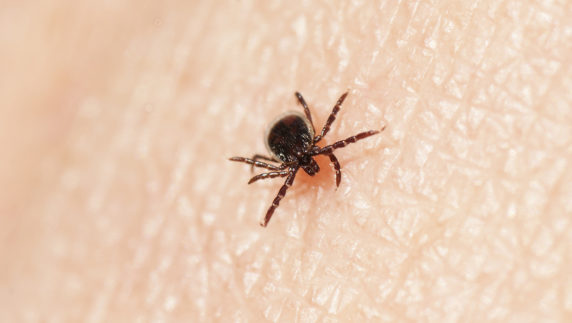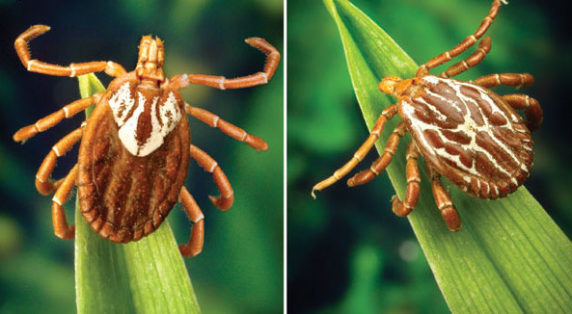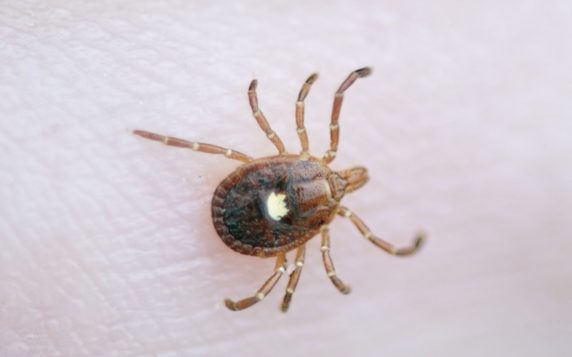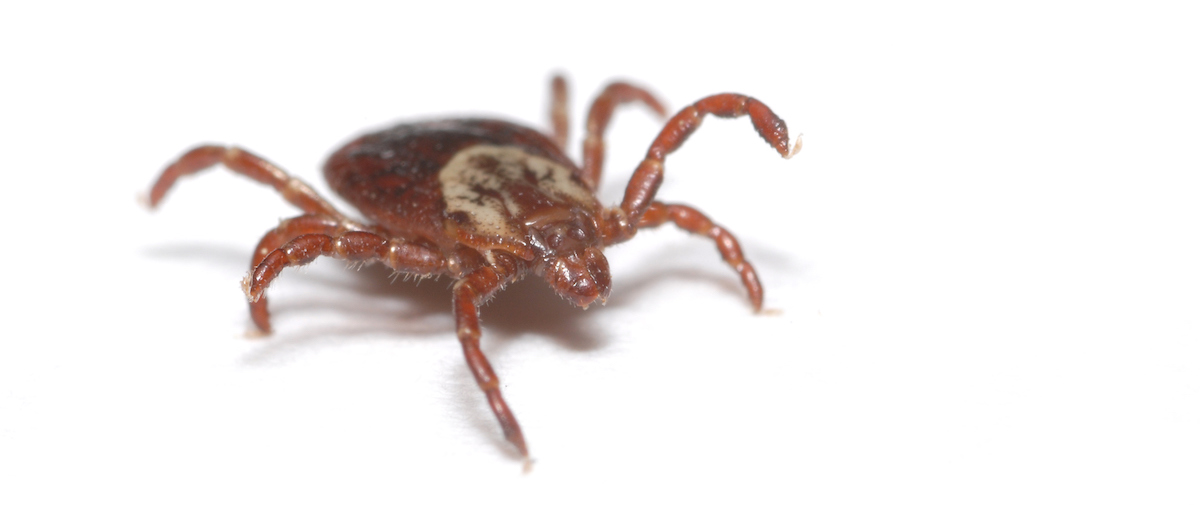Ticks don’t debate climate change. They just love warm weather.
At the state’s Agricultural Experiment Station in New Haven, where scientists study ticks submitted by the public, more than twice as many ticks (more than 1,000) were received in April than in the same period last year.
So stay alert when you’re outdoors.
“Tick bites can happen anywhere, especially in this area,” says Dr. Jason Kurtzman of Hartford HealthCare-GoHealth Urgent Care. “Tick bites happen in short grass, they happen in wooded areas around yards where there’s thicker underbrush and in wooded areas. But they can travel. If you walk your dog, it can bring them into the house.”
Here are some of the ticks you might encounter:
Deer (Eastern Blacklegged) Tick
What it looks like: A dark, reddish-brown abdomen when not engorged but becomes darker after feeding on a host. Long, thin mouth with a solid black dorsal plate (scutum, or back).
The risk: Best known for transmitting Lyme disease. Danger extends from spring through fall in the Northeast, but adult ticks search for a host in winter, too, when temperatures are above freezing.

Gulf Coast Tick
What it looks like: Dark brown with silver-white coloration near the head, with one median and two lateral stripes in adult females and, in males, dark brown with silvery white lines with a scutum covering the top of the tick.
The risk: Rickettsiosis, a type of spotted fever.

Lone Star Tick
What it looks like: Reddish-brown that turns slate gray when engorged. Adult females have a white, or silvery, spot on their back. Adult males have a white spot, shaped like an upside-down horseshoe, on their backs.
The risk: Erhlichiosis (fever, muscle aches) and Tularemia (a rare infectious disease that attacks the skin, eyes, lymph nodes and lungs). These ticks can carry the bacteria that causes Lyme disease, but rarely transmit it to a host. But some people bitten by one of these ticks develop a circular rash characteristic of early stage Lyme disease.

Asian Longhorned Tick
What it looks like: These ticks, reported for the first time in the United States in 2017, are brown with no distinctive markings on their back.
The risk: Rocky Mountain spotted fever, though unlikely to transmit Lyme disease. In Asia, this tick carries the virus that causes the potentially fatal human hemorrhagic fever.

What To Do if You Find a Tick
If you find a tick embedded in the skin, the chances of transmission of a parasite or a bacteria from tick to human is low in the first 20 to 24 hours.
Why? The parasites that reside in the tick’s midgut, or belly, first need to warm up, detach, then travel to the tick’s salivary glands to be transmitted to a human. Before that even happens, the tick takes a good 10 minutes to latch on securely and then must feed for a while.
The process — from latching on to bacterial arrival in the salivary glands — typically takes 36 to 48 hours. Remember, spirochetes are microscopic, so to keep it in perspective their travel distance is essentially equivalent to crossing a few state lines on a cross-country trip.
How To Remove a Tick
The Centers for Disease Control and Prevention recommends fine-tipped tweezers.
- Grasp the tick close to the skin.
- Pull steadily, with even pressure. A twist or other sudden movement could cause the tick’s mouth parts to break off and remain in the skin.
- After removal, clean the area thoroughly with rubbing alcohol, iodine or soap and water.
You can also try the Soapy Cotton Ball technique before reaching for tweezers. Apply liquid soap to a cotton ball until it’s soaked and gently cover the tick with the soap-soaked cotton ball for 30 seconds.
The tick will stick to the cotton ball when you lift it away.
When it comes to very small deer ticks and nymph (baby tick) removal, The American Academy of Pediatrics recommends using a credit card edge to scrape it away over the tweezers dance.
If the tick is not fully removed, clean the skin with rubbing alcohol and use a sterile needle to uncover the head or any other tick parts and lift it these out. Minuscule tick parts that may have been too small for removal will eventually shed with the skin. Post-removal, wash the wound and your hands with soap and water and apply antibiotic ointment.
If you’re concerned about the way a bite looks or if fever, joint pain or rash develop, visit any walk-in GoHealth Urgent Care Center.


